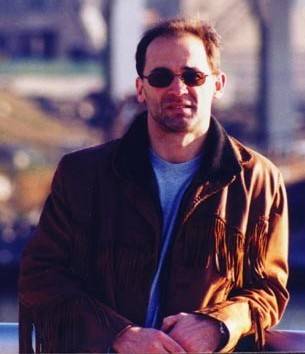Biography

Raymond Sicignano 's "Urban Portraits" are bold, colorful renderings of cityscapes that define human elements and expressions of a city or neighborhood. While these paintings capture a somewhat ephemeral and vanishing urban experience, they are nonetheless contemporary and actual venues that exist today, confident and brazen in their revolt against the ever growing, sterile whitewash of franchises and corporate logos. While each painting is an intimate view of everyday life at the street level that tells a uniquely individual story on its own, the collection as a whole portrays an important, almost anthropological representation of our culture on a larger scale. The work contains a strong optimism and human presence that embodies design, language and even humor.
Sicignano was born in 1958 in Brooklyn, NY. He studied at the Pratt Institute, receiving his BS degree in 1981. As a young person he was deeply involved in drawing and painting, and while working in Europe in the 1980s, he prepared for his work as an artist by intensively studying art in museums in London, Paris, and especially Florence. During that period, Sicignano met an American painter, became interested in his work, and represented him for the next few years, arranging exhibitions in a number of European cities.
This involvement was both an introduction to the art world, and stimulated him to begin painting when he returned to live in the U.S. in 1987. Settling in Englewood, NJ, where he currently lives and works, Sicignano started painting a scene from Venice featuring brightly colored boats reflected in the water. The canvas took six months to complete and served as a self-taught tutorial in the art of painting in oil. It also became for Sicignano a template for the work that was to follow, paintings of urban scenes with heightened color, that were both closely observed reality and poetic expressions that evoked both the spirit of a place and the artist’s inner life.
Sicignano has noted his special affinity for a number of artists, beginning with Vincent van Gogh, whose work he prizes for its color, emotion, and the passion “that comes through no matter what he paints.” He particularly relates to the work of Edward Hopper, with his devotion to painting American cities, although he points out their distinct artistic temperaments. He sees in Hopper’s work a melancholy that contrasts to his own sense of optimism. In Giorgio De Chirico’s shadowed urban spaces, Sicignano found a parallel to his own emotive vision.
After painting a number of images of European cities, Sicignano turned to his immediate environment in Englewood for inspiration. Following a series of portraits and work from trips to Alaska and other settings, in 2001 he started an extended series of paintings based on Harlem street scenes, which took special delight in the strong colors and unique designs of the establishments he found there. The work he did was exhibited extensively in Harlem, and aroused in Sicignano an interest in jazz which lead to four trips to New Orleans, and a group of paintings based on sites in that city.
Sicignano has shown his work extensively in solo exhibitions at the Benedetti Gallery, The Sugar Hill Gallery, and The Brownstone, all in New York, and in group exhibitions, including those at the National Arts Club, New York, and the Byrne Gallery, Middleburg, VA.
